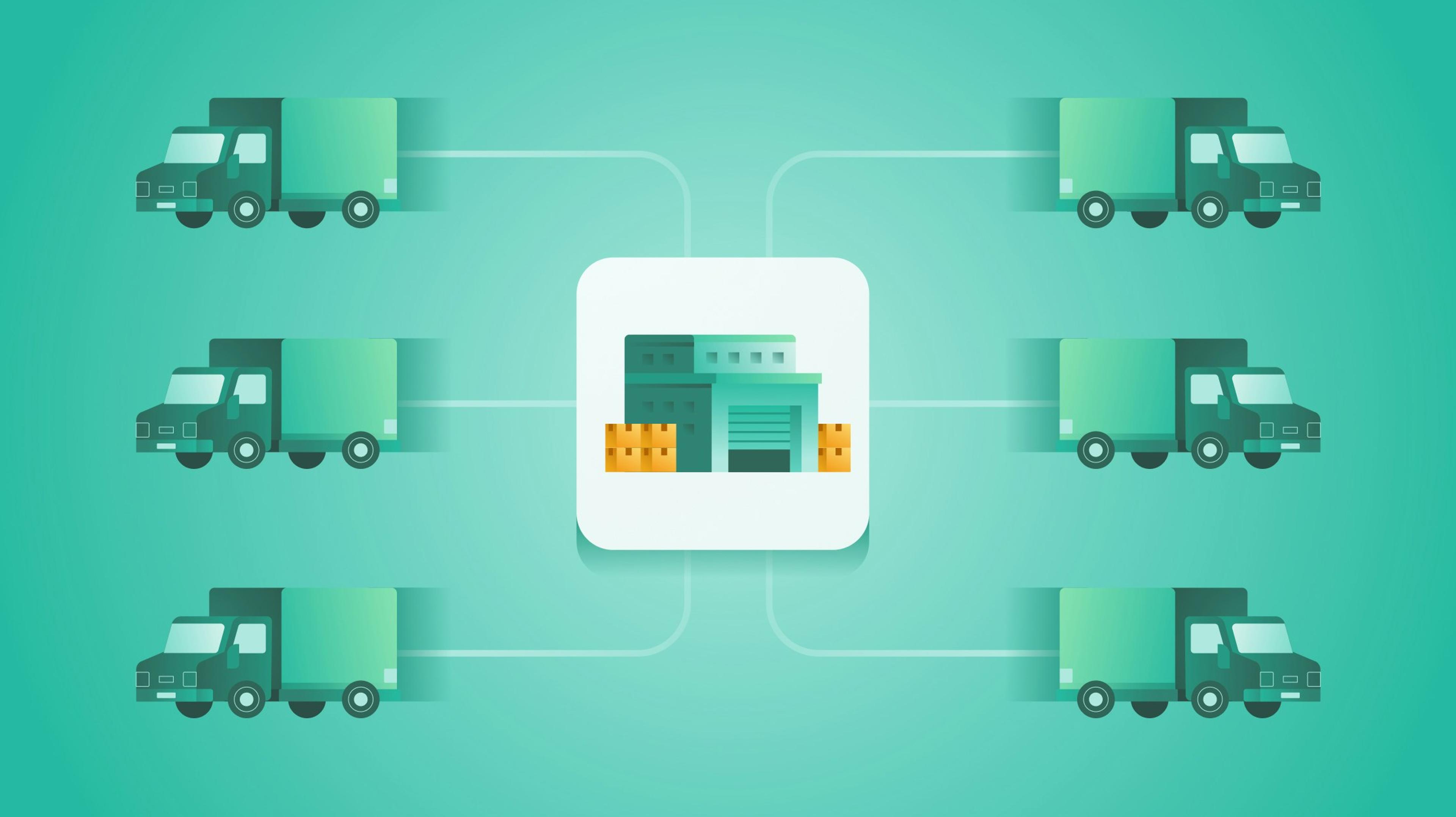How to Calculate and Reduce Inventory Holding Costs

Optimally manage your inventory all the way to your customer with Circuit for Teams for last-mile delivery.
For businesses, especially those in retail, manufacturing, or eCommerce, inventory is both a necessity and a burden. You need enough stock for business operations and customer satisfaction, but holding too much inventory can lead to unnecessary costs.
This post will teach you how to calculate your inventory holding costs, what the different types are, and give real ways of reducing these costs to hold on to more of your company's profits.
Key takeaways
- Inventory holding costs include expenses like the rental space, personnel, and insurance and depreciation costs associated with storing unsold inventory.
- Calculating inventory holding costs can help you make informed inventory management and business decisions.
- Improving your demand forecasting and using effective inventory management techniques, like Just-in-time (JIT) inventory management, can significantly reduce your inventory holding costs.
- Take control of your inventory by optimizing your entire supply chain all the way through last-mile delivery.

What are inventory holding costs?
Inventory holding costs, also known as inventory carrying costs, are the total costs associated with storing unsold goods or inventory.
Let's explore this with an example.
Consider a shoe manufacturer who has produced 1,000 pairs of shoes but has only been able to sell 500 pairs. The remaining 500 pairs of unsold shoes now make up his inventory.
The cost to store those unsold shoes, maintain the right temperature and humidity in the warehouse, and keep them safe from theft or damage all add to the total inventory holding costs (the cost of inventory).
The terms “holding costs” and “carrying costs” are used interchangeably. Both refer to the same concept of costs associated with holding, or “carrying,” inventory over a specific period of time.
Types of holding costs
Holding costs consider a variety of factors, each contributing to the overall cost a company faces to store its inventory. If you’re looking to optimally manage your inventory and minimize costs, the first step is understanding the different types of holding costs:
- Depreciation cost: This refers to the decrease in value of your inventory over time. Depreciation costs are especially important for businesses dealing with perishable items or products susceptible to fashion or technology changes.For example, if a clothing retailer has unsold summer inventory and must store it until the next summer, the company might have to mark down the prices due to changes in fashion trends, leading to depreciation.
- Insurance cost: Inventory is a huge company asset, so it needs insurance protection. From safeguarding against theft to coverage for damage due to unforeseen events such as flood or fire, there are many different business insurance types to consider.
- Obsolete inventory write-off cost: This cost is the loss a company takes for inventory obsolescence. A tech store carrying an old model of a laptop may have to write off this inventory as a loss if a newer model hits the market and lowers the demand for the older version.
- Personnel cost: This includes all expenses related to personnel managing the inventory, such as salaries, training, and benefits. If a company has lots of inventory requiring significant management, personnel costs can add up quickly.
- Rental space cost: This is the cost of the physical space required to store the inventory. Costs can either be explicit, like the property taxes paid for a warehouse, or implicit, like the cost of using business premises for storage instead of using it for more profitable uses.
- Security cost: Inventory often needs protection from theft, both external and internal, to avoid shrinkage. Security measures can range from surveillance systems to hiring security personnel.For instance, a jewelry store might need to invest more in high-level security measures to protect its high-value inventory.

How to calculate your inventory holding costs
Understanding and calculating inventory holding costs is an important part of effective inventory management. By accurately estimating these costs, businesses can make informed decisions about inventory levels, pricing, and overall business strategy. In this section, we'll guide you through the process of calculating your total inventory costs.
Inventory holding cost formula
The formula to calculate inventory holding costs is fairly straightforward:
Carrying cost (%) = (Inventory holding sum / Total value of inventory) x 100
The inventory holding sum is made of the four parts of the holding cost: capital cost (interest and investments in the unsold inventory), inventory service cost (rent and related fees), storage space cost (rent and related fees), and inventory risk cost (value depletion, shrinkage, etc.).
Inventory holding cost calculation example
I’ll explain this calculation with an example. Suppose a business has the following annual inventory carrying costs:
1. Capital cost: $5,000
2. Inventory service cost: $2,000
3. Storage space cost: $3,000
4. Inventory risk cost: $1,000
This adds up to an inventory holding sum of $11,000.
Now, if the total value of the company's inventory is $70,000, we can use the inventory holding cost formula to find the carrying cost as a percentage:
Carrying cost (%) = ($11,000 / $70,000) x 100 = 15.7%
So, the carrying cost is roughly 15.7% of the total inventory value. This means that it costs the company 15.7% of the inventory's total value each year to store and manage inventory.
The company can use this percentage to optimize stock levels so they can improve profitability and cash flow.
How to cut your inventory holding costs
Effectively managing your inventory holding costs is a must-have strategy in any inventory management toolbox.
Cutting inventory costs often boils down to improving inventory turnover rates, accurately calculating reorder points, and improving forecasting. This all comes together to improve supply chain management overall, making it more efficient and cost-effective.
Ready to discover some actionable ways to reduce costs that may be nibbling away at your profits? Take a look at these tips.
Improve your inventory management
Effective inventory management can greatly cut your holding costs. When you calculate your reorder point accurately, you can make sure you're holding optimal inventory levels.
E-commerce businesses, in particular, need to incorporate smart inventory management tactics to strike a balance between having enough stock to meet consumer demands and minimizing the capital tied up in inventory. Techniques like ABC Analysis and Economic Order Quantity (EOQ) can help you decide when and how much to reorder, reducing holding and service costs.
Streamline your supply chain
Making sure your supply chain is as efficient as it can be is a great way to cut down on inventory holding costs. The idea is to keep your stock moving through the supply chain instead of letting it collect dust in expensive warehousing.
After all, you're not making any money off goods that are just sitting around — unless, of course, you’re renting out some of your warehouse space to another company. If that’s the case, the more inventory, the merrier!
Nailing supply chain management involves solid relationships with suppliers and using technology to predict and plan. But once you do have it down, supply chain optimization is still a continuous journey.
Use just-in-time (JIT) inventory management
Just-In-Time (JIT) inventory management is a short-term strategy that aligns your inventory levels with customer demand, reducing the time products spend sitting in storage. Ordering inventory that matches projected sales can drastically cut down on holding costs while preventing stockouts.
For instance, a bakery that uses JIT delivery and inventory might order flour and sugar based on the exact amount of cookies, cakes, and pastries forecasted to sell the following day. This way, they're not wasting money storing excess ingredients that could go to waste.
Forecast demand
Understanding your business's future demand is like having a map for your inventory management strategy. Accurate demand forecasting lets you predict the number of goods you'll likely sell so you can keep appropriate stock levels and cut unnecessary inventory holding costs.
You can do this by analyzing past sales metrics, monitoring market trends, and understanding your customers' buying habits.
Optimize storage space
Efficient use of warehouse space goes beyond merely organizing your warehouse; it involves strategically arranging your company's inventory in a way that minimizes the amount of storage space required and, in turn, cuts down on the rental and utility costs.
For example, stock-keeping units (SKUs) with high turnover rates should be easily accessible to reduce picking and handling time. Regularly auditing the value of inventory also helps in disposing of (or offering promotions on) obsolete or slow-moving items to free up valuable space.
Use cross-docking
With cross-docking, as soon as a shipment lands at your warehouse, you immediately send it off to its next stop in the supply chain instead of storing it. This means less time spent storing inventory and less money spent on warehouse space.
Businesses dealing with fast-moving inventory or perishable goods often find the cross-docking strategy extremely helpful. It decreases their storage costs and the time from production to market, making products available to customers sooner.

Cut operating costs and streamline deliveries with Circuit for Teams
Keeping your inventory costs in check and making your deliveries as smooth as possible are key to keeping your inventory operations top-notch.
Inventory strategies include improving your demand predictions, making your supply chain more efficient, and being smart about using your storage space. These all have one common goal: reducing your inventory costs.
But it’s not just about saving money — it's also about staying flexible and ready for whatever the market throws your way. Managing your inventory like a pro can boost your bottom line, but more importantly, it can help make your customers happier and keep your business going strong for a long time to come.
Inventory management includes managing your deliveries all the way through the supply chain to your customer’s door.
Take control of your delivery process and costs with Circuit for Teams. Sign up today and find out how it ramps up your delivery efficiency and shaves off costs.


